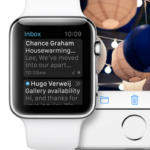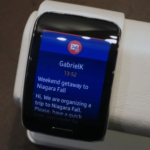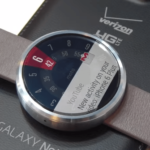Desktop. Mobile. Smartwatch? Roll your eyes if you must, but as a digital marketer you have likely noticed that it’s getting harder to ignore the buzz about wearables. The market is finally catching up with Dick Tracy and Inspector Gadget’s Penny, creating another shift in the landscape for digital marketers. This post explores some of the available information on smartwatches to put things in perspective, provide some hard-to-find specs and offer a few tips to optimize the wearable email experience for your subscribers.
With the holidays giving the smartwatch market a boost, new designs and technologies being released at CES, and the steady din about the Apple Watch, I started poking around to find out more about the email capabilities of smartwatches and the potential implications for marketers. If you’ve done the same, you would know that there is limited information out there. I’ve done the digging for you and even got my hands on some smartwatches to test out some of the capabilities for myself.
I’ve tried to be as complete and accurate as possible for this post but this is still fairly uncharted territory. If you have additional information, please leave comments!
Smartwatch Specs for Marketers
Are you curious about how many characters display in the email app of a smartwatch? I was too. Unfortunately, these specs are hard to come by. While some of the features below are pulled from official websites and product reviews (like this great one by Gizmag), character count details are based on hands-on experience, image searches and/or painstaking pause-and-count views of video reviews. The counts may be off by a few letters (due to letter widths, text wrapping, and the like) but this will serve as a rough idea of what you have to work with on such small screens.
Apple Watch (Based on available preview material)
Subject Line Characters: 12-20 (1 line of text)
Message Body Characters: 25-35 (above the fold in the inbox view)
Email Actions: Read, Flag, Mark as Read/Unread, Delete
Samsung Gear S
Subject Line Characters: 30-45 (2 lines of text in notification screen, up to 5 lines of text of approximately 18-24 characters each when notification is expanded)
Message Body Characters: 55-80 (above the fold, length available is dependent on subject line length)
Email Actions: Read, Forward, Reply, Delete, Show on Device (open on mobile)
Motorola Moto 360
Subject Line Characters: 26-40 (2 lines of text in notification, up to 5 lines of text of approximately 13-20 characters each when notification is expanded)
Message Body: 50-75 (above the fold, length available is dependent on subject line length)
Known Email Actions: Read, Reply, Open in Phone, Archive
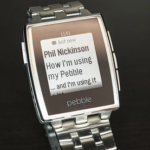
Subject Line Characters: 12-18 (assuming 1 line of text)
Message Characters: 35-50
Email Actions: Only able to read email notifications. I should note that the demo notification screen (prior to click on individual notifications) appears to show the email message body instead of the subject line.
The average display size for standard smartwatches is 1.57” (as calculated by averaging 8 smartwatch models ranging from 1.26” for the Pebble to 2” for the Samsung Gear S). These 8 models include the Samsung Gear S, Asus ZenWatch, Motorola Moto 360, Pebble, LG G Watch R, Omate TrueSmart, Sony Smartwatch 3, and Alcatel OneTouch. I did not include two of the largest wearables (the Rufus Cuff at 3” and the Neptune Pine at 2.4”) with this group as they are arguably too big to consider smartwatches. Rufus Labs even dubs their Cuff a “wrist communicator”.
The majority of the smartwatches I did more in-depth research on have color displays (7 of the 8). Aside from the Pebble, all of these devices allow subscribers to read actual emails but many of them truncate longer messages. This reinforces the best practice of keeping your most important content higher up in the email.
Responsive Design for Smartwatches?
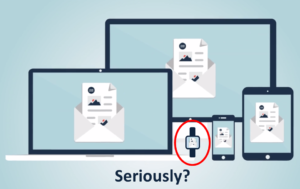
At a technical level, media queries are a ways off from being well supported in this space. Smartwatch browsers and operating systems are still in their infancy. There are relatively few smartwatches available now that are standalone devices with native browsers (such as the Samsung Gear S and Neptune Pine). Browser apps are starting to pop up, such as the Wear Internet Browser but I couldn’t track down whether this will support media queries that will point to the smartwatch instead of the mobile device it’s tethered to.

For the time being, technology roadblocks plus low market penetration plus the ability for users to create rules for notifications means that it’s just not worth the extra effort for brands…yet. That said, we can bet that browsers and operating systems are going to grow up pretty quickly, especially if we see adoption in-line with some of the predictions that I’ve come across (this one being the most comprehensive). Once smartwatch brands are able to fine-tune the purpose and use cases of these devices (something that Apple may help clarify for the entire market in a few months with their marketing push), and users get used to managing email on smartwatches (remember how crazy it seemed to check marketing emails on your phone not too long ago?), things may change in a hurry.
For Overachievers: What You Can Do NOW to Optimize for Smartwatches
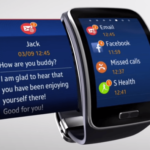
As a marketer, what can you do right now to prepare for increased smartwatch usage? For the time being, stick to low hanging fruit that supports general email best practices. Be sure to front load your subject lines, putting the most important and interesting information at the beginning. Try using action words, pique interest, and leverage hot keywords from your PPC efforts up front. As you review your subject lines, focus on the first few words. Will these words encourage a click or capture attention? If not, consider reworking them.
Next, be sure to include a pre-header summary. Based on the available material out there, I’m making the relatively safe assumption that smartwatch notifications are pulling in the first available bits of text. Do not waste these precious characters (and your brand’s cool points) on “Trouble Viewing” or “Add to Address Book” boilerplate language! Be sure to put your pre-header above all other text in the email. Also, ensure that your pre-header summary is different from your subject line, that it builds interest, and uses different keywords. Again, focus on the first several words in the summary. Think about how the first few characters of the subject line and pre-header summary will work together to convey your message or offer.
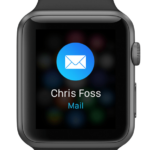
If you’re looking for ideas on how to get crafty and capitalize on the product potential of smartwatches, check out this great article from The Tech Block. As the market becomes more defined, it’s important to think of the benefits and capabilities that are unique to smartwatches. Don’t just try to scale down your current content and experiences!
The landscape in digital marketing is forever changing (Internet of Things, anyone?). Just be sure to think about your customers and their needs and try to have some fun while you’re at it.

